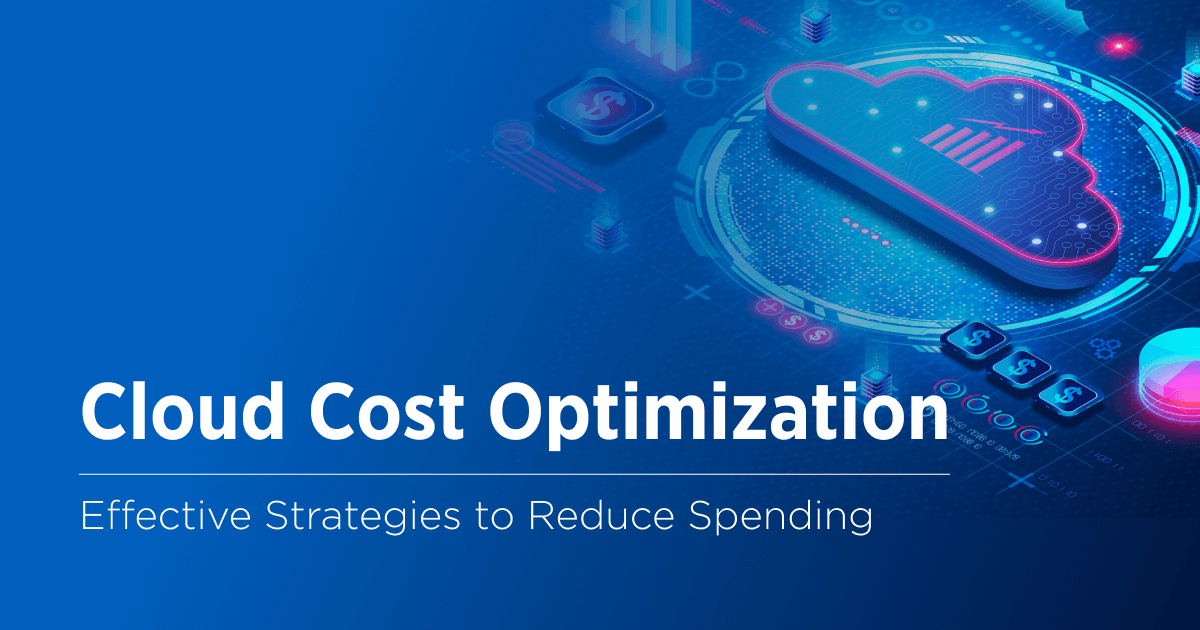Cloud computing powers modern businesses, but unchecked cloud spending can strain budgets. As organizations scale their cloud usage, cloud cost optimization becomes critical to balance performance and cost. In this guide, we explore the top cloud cost-saving strategies for 2025, offering practical tips to manage cloud costs effectively.
Why Cloud Cost Optimization Matters
Cloud costs can spiral due to overprovisioning, unused resources, or poor visibility into spending. Studies suggest that up to 30% of cloud budgets are wasted on inefficient resource usage. Optimizing costs not only saves money but also improves operational efficiency, enabling teams to focus on innovation.
Why It Matters: Effective cost management ensures sustainable cloud adoption without compromising performance.
Critical Insight: While the article emphasizes waste reduction, it overlooks the complexity of optimizing costs in multi-cloud environments, where differing pricing models and tools can complicate strategies.
Key Cloud Cost-Saving Strategies for 2025
Here are five proven strategies to reduce cloud costs and maximize value in 2025.
1. Implement Cloud Cost Monitoring Tools
Visibility is the first step to cost optimization. Tools like AWS Cost Explorer, Azure Cost Management, and Google Cloud’s Cost Management provide detailed insights into spending patterns.
Steps:
- Set up dashboards to track usage by service, region, or team.
- Configure alerts for unexpected cost spikes.
- Analyze historical data to identify trends and forecast budgets.
Why It Matters: Real-time monitoring helps pinpoint wasteful spending, such as idle instances or oversized resources.
Critical Insight: While these tools are powerful, they require regular tuning to avoid alert fatigue. Small teams may struggle to act on insights without dedicated FinOps expertise.
2. Right-Size Resources
Overprovisioning is a common cause of high cloud costs. Right-sizing involves matching resources (e.g., compute, storage) to actual workload needs.
Steps:
- Use cloud provider tools to analyze resource utilization.
- Downsize underutilized instances or switch to smaller instance types.
- Adopt auto-scaling to dynamically adjust resources based on demand.
Pro Tip: Leverage reserved instances or savings plans for predictable workloads to lock in discounts.
Critical Insight: Right-sizing is effective but requires ongoing effort. The article understates the challenge of predicting workload patterns in dynamic environments, where auto-scaling misconfigurations can lead to unexpected costs.
3. Eliminate Unused Resources
Orphaned resources—like unattached storage volumes, idle databases, or stopped VMs—can silently inflate bills.
Steps:
- Schedule regular audits to identify and delete unused resources.
- Use tagging to track ownership and purpose of resources.
- Automate cleanup with scripts or tools like AWS Lambda or Azure Automation.
Why It Matters: Eliminating waste directly reduces costs without impacting performance.
Critical Insight: Tagging and automation are great, but inconsistent tagging practices across teams can undermine efforts. The article doesn’t address the cultural shift needed to enforce discipline in resource management.
4. Leverage Spot Instances and Discounts
Cloud providers offer discounted pricing models like AWS Spot Instances, Azure Spot VMs, or Google Preemptible VMs for interruptible workloads.
Steps:
- Identify non-critical workloads (e.g., batch processing, CI/CD pipelines) suitable for spot instances.
- Combine with committed-use discounts or savings plans for stable workloads.
- Monitor spot instance availability to avoid disruptions.
Why It Matters: Spot instances can cut costs by up to 90% compared to on-demand pricing.
Critical Insight: Spot instances are cost-effective but risky for mission-critical applications due to potential interruptions. The article could better emphasize fallback strategies, like hybrid on-demand/spot setups, to mitigate risks.
Learn More: Check out AWS’s Cost Optimization Hub for more pricing options.
5. Adopt a FinOps Culture
FinOps (Financial Operations) aligns cloud spending with business goals by fostering collaboration between finance, DevOps, and engineering teams.
Steps:
- Train teams on cost-awareness and FinOps principles.
- Assign accountability for cloud spending to specific teams or projects.
- Use FinOps tools like Cloudability or Apptio Cloudability to centralize cost governance.
Why It Matters: A FinOps culture ensures long-term cost discipline and accountability.
Critical Insight: While FinOps is transformative, adopting it requires significant organizational change, which the article glosses over. Smaller companies may find the overhead of FinOps practices challenging without dedicated resources.
Best Practices for Managing Cloud Costs
To sustain cloud cost optimization, follow these best practices:
- Automate Where Possible: Use tools to automate resource cleanup and scaling.
- Educate Teams: Ensure developers understand the cost impact of their choices.
- Review Regularly: Conduct monthly cost reviews to catch inefficiencies early.
- Benchmark Performance: Compare costs across providers to negotiate better deals.
Call to Action: Ready to cut cloud costs? Start with a free trial of AWS Cost Explorer or subscribe to our newsletter for more cloud spending 2025 tips!
Conclusion
Mastering cloud cost-saving strategies in 2025 is essential for businesses leveraging cloud infrastructure. By monitoring spending, right-sizing resources, eliminating waste, using discounts, and adopting FinOps, you can manage cloud costs effectively. Stay proactive to ensure your cloud investments deliver maximum value.

